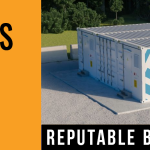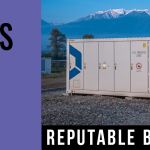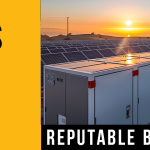 Clean tech giant Tesla has delivered its Powerpack battery storage system to a tidal power station off the coast of the Shetland Islands in the UK.
Clean tech giant Tesla has delivered its Powerpack battery storage system to a tidal power station off the coast of the Shetland Islands in the UK.
Tesla’s Powerpack can store excess energy generated at the tidal power station, which is operated by Scottish firm Nova Innovation, to be used when the turbines stop producing electricity.
Nova Innovation CEO Simon Forrest said: “By storing the clean energy generated by the natural ebb and flow of the tide, we can control the supply of electricity to the grid to match demand. This creates a consistent source of completely predictable power from a clean, sustainable resource.
“Nova’s expertise in smart grid control, renewable generation and energy storage has delivered this game-changing innovation. We now look forward to expanding our services to other markets and renewable projects.”
The scale of the project, said to create “the world’s first grid-connected ‘baseload’ tidal power station”, has not been confirmed. However, the 600kW tidal system has now been connected to the national grid.
The delivery of Powerpack battery storage system was backed by the Scottish Government, which donated £272,606 in funds to the project.
Scotland’s Energy Minister Paul Wheelhouse commented: “This project will utilise both renewable tidal technology and battery storage from one of the world’s pioneers of battery storage, Tesla, to overcome the challenges of current grid constraints and to enable the improved, uninterrupted, provision of low carbon energy not only in Shetland but in other small island communities across Scotland.
“Crucially, however, by undertaking this work in Scotland, we can also play a key role in helping inform the sustainable decarbonisation of energy for communities across the world.”
Tesla has already deployed its Powerpack battery storage system for several renewable solar and wind projects, but this is the first tidal power station using the technology.
read more
 The microgrid demonstration plant which was completed in November last year provides electricity to 14 households with 81 family members that make up the Wilhelmina community.
The microgrid demonstration plant which was completed in November last year provides electricity to 14 households with 81 family members that make up the Wilhelmina community. The microgrid demonstration plant which was completed in November last year provides electricity to 14 households with 81 family members that make up the Wilhelmina community.
The microgrid demonstration plant which was completed in November last year provides electricity to 14 households with 81 family members that make up the Wilhelmina community.
 Clean tech giant Tesla has delivered its Powerpack battery storage system to a tidal power station off the coast of the Shetland Islands in the UK.
Clean tech giant Tesla has delivered its Powerpack battery storage system to a tidal power station off the coast of the Shetland Islands in the UK. Sembcorp has signed an agreement to build 6.2MW of rooftop solar projects on top of two Singapore facilities owned by a major energy industry service provider, including one of Singapore’s largest rooftop projects, standing at 4.7MW.
Sembcorp has signed an agreement to build 6.2MW of rooftop solar projects on top of two Singapore facilities owned by a major energy industry service provider, including one of Singapore’s largest rooftop projects, standing at 4.7MW. ISO New England, joined by the New England Power Pool (NEPOOL), has filed revisions with the Federal Energy Regulatory Commission (FERC) to codify a new design that would enable batteries and other storage technologies to more fully participate in the New England wholesale electricity markets.
ISO New England, joined by the New England Power Pool (NEPOOL), has filed revisions with the Federal Energy Regulatory Commission (FERC) to codify a new design that would enable batteries and other storage technologies to more fully participate in the New England wholesale electricity markets. Arlington Energy, a clean energy investment group, has announced plans to build out a 1GW portfolio of energy storage and gas peaker projects across the UK after securing initial funding of £200 million (US$255 million) from an offshore fund of institutional investment.
Arlington Energy, a clean energy investment group, has announced plans to build out a 1GW portfolio of energy storage and gas peaker projects across the UK after securing initial funding of £200 million (US$255 million) from an offshore fund of institutional investment. The Federal Energy Regulatory Commission has given every grid operator in the country a December deadline for submitting plans for integrating energy storage into capacity, energy and ancillary services markets.
The Federal Energy Regulatory Commission has given every grid operator in the country a December deadline for submitting plans for integrating energy storage into capacity, energy and ancillary services markets. The $2 million contract is part of the DoE’s FY2018 SETO funding programme and will develop a best-in-class next generation heliostat design, optimised for CSP technology projections of the next decade.
The $2 million contract is part of the DoE’s FY2018 SETO funding programme and will develop a best-in-class next generation heliostat design, optimised for CSP technology projections of the next decade.



